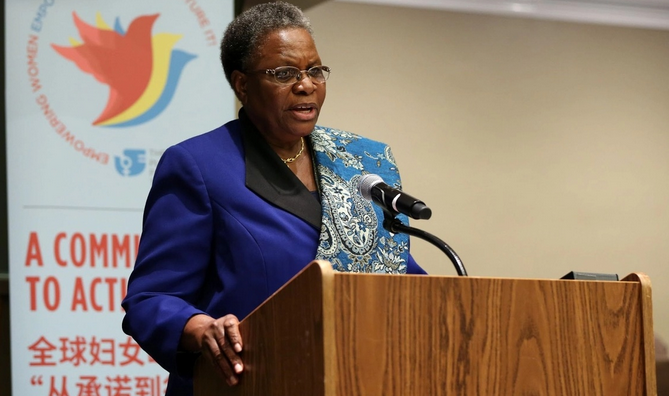Zimbabwe’s president Mnangagwa far right shown with other SADC leaders.
A forecast for southern Africa pointing to the likelihood of normal to above normal rainfall in the 2021 – 2022 cropping season has brought hopes to a region which often suffers from unrelenting droughts. Above average rains expected over the bulk of the SADC region.
The seasonal forecast was issued by the 25th Southern African Regional Climate Outlook Forum (SARCOF 25), a yearly meeting of regional climate experts.
SARCOF-25 was held virtually from August 30 to 31 to generate a consensus outlook for the forthcoming summer rainy season over SADC. From the regional forecast, more detailed information on likely rainfall patterns will be deduced by each member state through National Climate Outlook Forums hosted by the national meteorological service department.
The seasonal rainfall outlook is considered a critical planning tool that helps farmers select the right varieties and even the right crops to plant, depending on what can be expected in their area. In the SADC report, normal to above-normal rainfall has been forecast during the three months from October to December this year, the first half of the season, but normal to below normal rainfall is likely in an arc along the Atlantic and into the north of the region, the area encompassing north-western Angola, most of Democratic Republic of Congo, western and southern Madagascar, northern Malawi, northern Mozambique, the western fringes of Namibia and South Africa, and south-western Tanzania and north-eastern Zambia.
In the first half of the rainy season, there are increased chances of normal to above-normal rainfall in the zones covering northern DRC, northern Tanzania, northern Mozambique, southern Tanzania, northern Malawi, northernmost Zambia, bulk of DRC and north-western part of Angola, Central Mozambique, southern Malawi, northern half of Zimbabwe, most of Zambia, southernmost DRC, south-eastern half of Angola, bulk of Namibia, western half of Botswana, most of central and western parts of South Africa and western parts of Lesotho, extreme south-western Zambia, Caprivi area of Namibia, south-easternmost Angola, south-western Zimbabwe, eastern half of Botswana, most of northern South Africa, eastern Lesotho, Eswatini, and southern Mozambique.
However, Zone 6 which includes south-western Angola and western coastal areas of Namibia and western fringes of South Africa, has increased chances of normal to below-normal rainfall. In the Indian Ocean, western Madagascar is likely to receive normal to below-normal rainfall while the eastern side of this island nation will get normal to above-normal rainfall. Southern Madagascar has increased chances of normal to below-normal rainfall while other island countries that include Mauritius, Seychelles and the Comoros will receive normal to above-normal rainfall.
The situation for the island nations will improve in the January – March 2022 period –the second and final phase of the summer season. Adequate rains forecast for the coming season will have a positive impact on agriculture, water resources and hydropower generation in most of the region.
This is for the second consecutive season that Southern Africa is receiving good rains, something that will bolster food and water security for the region as well as replenish ground and dam water enhance hydro power generation.
In the 2020 -2021 cropping season, the bulk of SADC received good rains resulting in a bumper harvest in most countries and the saving of millions of dollars that could have been spent on food imports and food relief programs. For instance, Zimbabwe is expecting 2,8 million tonnes of maize to be delivered at its Grain Market Board, saving the country some US$300 million in maize imports.
Several countries in the Southern African region also got bumper cereal harvests from the 2020-21 summer cropping season following normal to above normal rainfall.
A forecast of South Africa’s yields indicated a harvest at 18.7 million tonnes compared to 17.6 million tonnes in 2019-20, Malawi 3,8 million tonnes (up 25 percent year on year), Mozambique 2,1 million and Zambia about 3.62 million tonnes maize.
The region usually suffers back-to-back droughts. The region recorded the lowest rainfall in nearly four decades in the 2018-2019 cropping season, resulting in increased food insecurity and water shortages in the region.
Most countries in the SADC declared a state of emergency over the situation which left more than 500 000 people without access to enough food and water. Countries registered huge losses of livestock which died due to hunger and lack of water.
However, regional climate experts warned the 16-SADC member states to reactivate disaster risk and management programs to minimize the potential impact of a wetter season forecast in the coming summer rainy season.
They said the normal to above normal rains were likely to bring outbreaks of locusts, armored crickets and the fall army-worm and experts said countries in the region should plan and intensify surveillance of pests to minimize damage to crops.
Apart from this, experts urged member states to plan ahead for emergency response and preparedness programs to minimize the damage and catastrophe that might come with flooding, cyclones and leaching of crops.
Countries were encouraged to put proper drainage measures, do contouring for ridging to protect crops and assist with drainage and canals. The region is likely to experience an average or above-average number of tropical cyclones this season.
Tropical Cyclone Idai, the worst in more than 50 years, brought heavy rainfall and strong winds to Malawi, Mozambique and Zimbabwe between March 5 and 19 2019, causing severe flooding which led to loss of lives, destruction of infrastructure, disruption of livelihoods and destruction of crops.
An estimated three million people in the three countries were affected.
Sifelani Tsiko is a veteran journalist based in Harare, Zimbabwe. He can be reached via [email protected]






